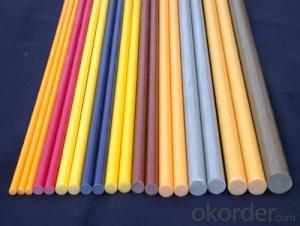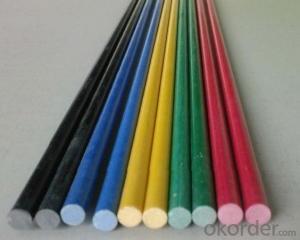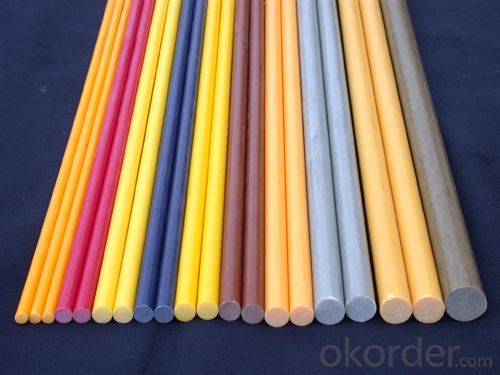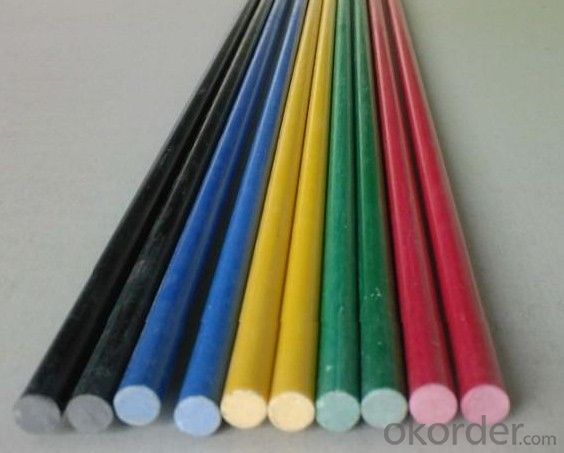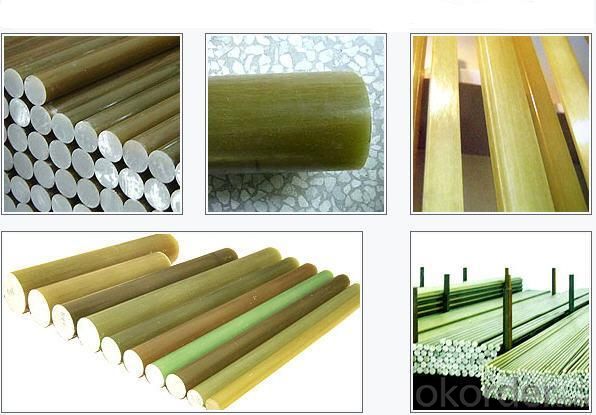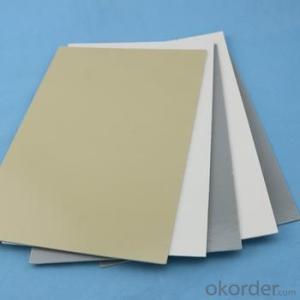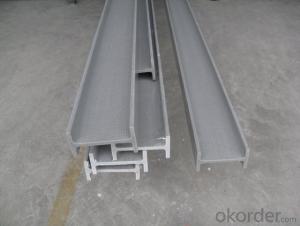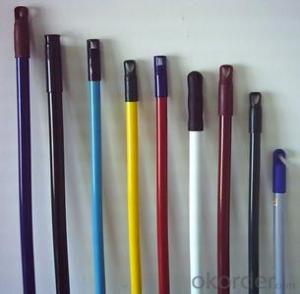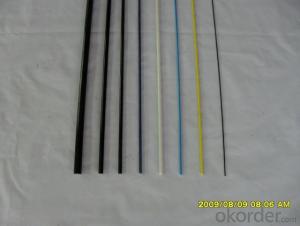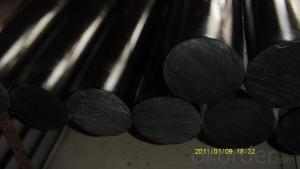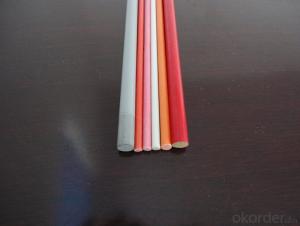FRP Pultrusion Profiles Fiberglass Pipe
- Loading Port:
- China Main Port
- Payment Terms:
- TT OR LC
- Min Order Qty:
- -
- Supply Capability:
- -
OKorder Service Pledge
OKorder Financial Service
You Might Also Like
Specifications of Fiberglass Pipe:
1.high strength fiberglass tube
2. dia. from 1.0 to 76.0 mm
3. never-rusting & heat resistant
4.non-conductive & non-magnetic
Description of Fiberglass Pipe:
1.They are made of the composite material fiberglass reinforced plastic, which is a non-homogenous mix of continuous fiberglass threading and a thermoplastic resin.
2.The fiberglass acts as a reinforcing agent that adds strength without adding much weight. Fiberglass is also chemical, rust and temperature resistant, non-conductive and non-magnetic.
3.Regular colors are black, gray, red, orange, yellow, white, green & blue, but other colours available at buyer's request.
4.Unit length per piece could be from several millimeters to more than 30 kilometers at buyer's option.
- Q: Are FRP pultrusion profiles resistant to jet fuel?
- Yes, FRP pultrusion profiles are generally resistant to jet fuel.
- Q: Can FRP pultrusion profiles be used in the construction of offshore platforms?
- Yes, FRP pultrusion profiles can be used in the construction of offshore platforms. FRP, or fiber-reinforced polymer, offers excellent corrosion resistance, high strength-to-weight ratio, and durability, making it suitable for the harsh marine environment. These profiles can be customized to meet the specific requirements of offshore platforms, providing structural support and stability while minimizing maintenance needs.
- Q: The manufacturing process of FRP products?
- 1, hand paste production method; 2, spray forming method; 3, fiber winding process; 4, molding process and molding process; 5, pultrusion method.
- Q: Are FRP pultrusion profiles UV-resistant?
- FRP pultrusion profiles are known for their UV resistance. This is because they are made by combining reinforcing fibers, like glass or carbon, with a polymer matrix, such as polyester or vinyl ester. These materials naturally resist UV radiation, allowing FRP pultrusion profiles to endure long exposure to sunlight without significant deterioration or loss of mechanical properties. However, it's important to note that the UV resistance of FRP pultrusion profiles can vary based on the polymer matrix's type and quality used in their manufacturing. Thus, it is recommended to consult the manufacturer or supplier for detailed information regarding the UV resistance of specific FRP pultrusion profiles.
- Q: Are FRP pultrusion profiles resistant to caustic solutions?
- FRP pultrusion profiles are known for their resistance to caustic solutions. The combination of reinforcing fibers and the polymer matrix used in FRP pultrusion provides exceptional chemical resistance. Unlike traditional materials like steel or wood, which can be corroded or degraded by strong alkaline substances, FRP pultrusion profiles are highly resistant to chemical attack. This makes them suitable for industries that frequently encounter caustic solutions, such as chemical processing, wastewater treatment, and marine environments. However, it is important to refer to the manufacturer's specifications and guidelines to ensure compatibility between specific caustic solutions and the chosen FRP pultrusion profile.
- Q: Are FRP pultrusion profiles resistant to chemicals used in power plants?
- FRP pultrusion profiles are generally resistant to chemicals commonly used in power plants, such as acids, alkalis, solvents, and corrosive gases. These profiles possess excellent chemical resistance properties, which make them suitable for various industrial applications, including power plants. However, the level of chemical resistance may vary depending on the resin matrix and the specific chemicals to which they are exposed. To ensure that the FRP pultrusion profiles meet the chemical resistance requirements in a power plant environment, it is essential to consult with the manufacturer or supplier regarding the specific resin matrix and formulation used.
- Q: Are FRP pultrusion profiles resistant to chemicals used in mining operations?
- Yes, FRP (Fiber Reinforced Polymer) pultrusion profiles are highly resistant to chemicals commonly used in mining operations. The composite material used in FRP pultrusion profiles is inherently corrosion-resistant and can withstand the harsh chemical environment typically encountered in mining. Additionally, FRP pultrusion profiles offer excellent resistance to acids, alkalis, solvents, and other chemicals, making them a durable and reliable choice for mining applications.
- Q: Are FRP pultrusion profiles resistant to fungi and mold?
- Yes, FRP (Fiber Reinforced Polymer) pultrusion profiles are generally resistant to fungi and mold. This is due to the non-porous nature of the materials used in their construction, such as fiberglass and epoxy resins. These materials do not provide a suitable environment for fungi and mold to grow, making FRP pultrusion profiles highly resistant to their growth and colonization. Furthermore, FRP pultrusion profiles are inherently moisture-resistant, which is another factor that discourages the growth of fungi and mold. Unlike traditional materials like wood, which can absorb moisture and provide a conducive environment for fungal and mold growth, FRP profiles do not absorb water and are therefore highly resistant to these issues. The combination of non-porous materials and moisture resistance makes FRP pultrusion profiles a suitable choice for applications where fungi and mold resistance is crucial, such as in humid or damp environments. However, it is important to note that no material is entirely immune to fungi and mold growth under all circumstances. In certain extreme conditions, where there is prolonged exposure to high levels of moisture and organic matter, it is still possible for some fungi and mold to colonize FRP profiles. However, compared to other materials, FRP pultrusion profiles offer a significantly higher level of resistance to these issues.
- Q: Are pultruded FRP sections strong? What are its main areas of application?
- General and environmental units of manhole covers, factories and mines units of insulated cable tray; chemical units of the transmission pipeline; insulation protection fence; including floor and so on.
- Q: Can FRP pultrusion profiles be used for structural applications?
- Yes, FRP pultrusion profiles can be used for structural applications. They are commonly utilized in various industries such as construction, automotive, aerospace, and marine. FRP pultrusion profiles offer high strength-to-weight ratio, excellent corrosion resistance, and durability, making them suitable for structural components like beams, columns, and trusses. Additionally, they can be designed to meet specific load requirements and offer design flexibility.
Send your message to us
FRP Pultrusion Profiles Fiberglass Pipe
- Loading Port:
- China Main Port
- Payment Terms:
- TT OR LC
- Min Order Qty:
- -
- Supply Capability:
- -
OKorder Service Pledge
OKorder Financial Service
Similar products
Hot products
Hot Searches
Related keywords
